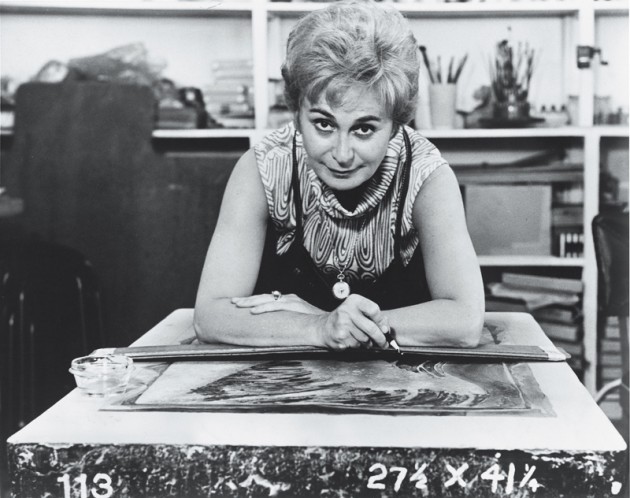The Original Print: An Introduction to Printmaking in the Postwar Period
The art world of the late 1950s experienced a groundswell of interest in printmaking that forever changed the artistic landscape of America. By that time, the most avant-garde of artists had become interested in making editioned works on paper with a press, using methods no longer relegated to a select group who defined themselves solely as “printmakers.” Because this development was still in its germinal stages in the 1950s, however, there existed only a handful of places in the country where eager young artists could learn the techniques of printmaking. Academic institutions tended to favor familiar and conventional intaglio methods, drawing on Rembrandt, Goya and Whistler, art history’s most successful artist-printmakers. Lithography and screenprinting, which suited the growing pop and minimal aesthetic as well as the more painterly approaches of expressionism, were harder for artists to adopt. These methods, traditionally used only for commercial printing, were still in their infancy as fine-art techniques. As a result, they were rarely taught in university art programs, and by the late 1950s, there were only three or four studios in the country that could claim success as fine-art lithography printshops, and even fewer for screenprinting.
The establishment of Tamarind Lithography Workshop in Los Angeles in 1960 manifestly changed all of that. The workshop instituted an artist and printer training program as well as educational outreach that emphasized the nature of printed work. It insisted on the advantages of collaboration: a trained printer did the printing, while the artist was responsible for the creative impulse. The image of a lone artist, removed from contemporary culture or from collaboration, and guided only by gut instinct to a singular visual epiphany, gave way to that of an artist who was far more calculating, who drew from popular culture, who accepted a carefully crafted image and who could embrace an editioned work. The cumulative effect of these developments was an unprecedented explosion in printmaking across the country.
Because this story is centered on less-familiar methods of art making—many of which may be new to our visitors—The Original Print introduces the methods and terminology most commonly used in printmaking. The exhibition, organized as a companion to Proof: The Rise of Printmaking in Southern California, demonstrates the four main types of printmaking: relief printing, intaglio, lithography and screenprinting. The explanatory texts, archival documentation, photographs, video footage and objects in the gallery seek to contextualize the nature of making works of art in an edition.

